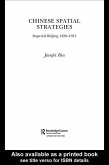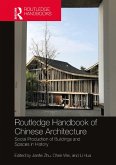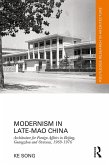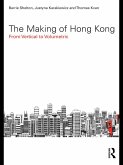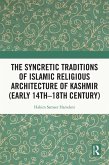Chinese Spatial Strategies presents a study of social spaces of the capital of Ming Qing China (1420-1911). Focusing on early Ming and early and middle Qing, it explores architectural, urban and geographical space of Beijing, in relation to issues of history, geopolitics, urban social structure, imperial rule and authority, symbolism, and aesthetic and existential experience. At once historical and theoretical, the work argues that there is a Chinese approach to spatial disposition which is strategic and holistic.
Dieser Download kann aus rechtlichen Gründen nur mit Rechnungsadresse in A, B, BG, CY, CZ, D, DK, EW, E, FIN, F, GR, HR, H, IRL, I, LT, L, LR, M, NL, PL, P, R, S, SLO, SK ausgeliefert werden.



